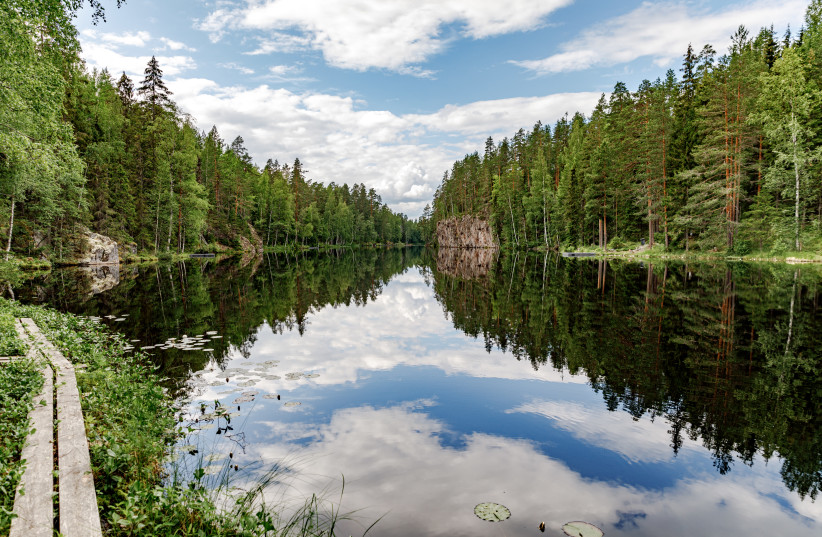Regular visits to green spaces linked to lower use of certain prescriptions - study

Research in forest-rich Finland studied responses of 16,000 residents of Helsinki, Espoo and Vantaa
Frequent visits to green spaces in cities such as parks and community gardens – rather than the amount or views of them from home – may be linked to lower use of certain prescription meds, suggests research conducted in Finland.
The observed connections between such visits and lower use of drugs for depression, anxiety, insomnia, high blood pressure and asthma were not dependent on people’s educational and income level.
Exposure to natural environments is thought to be good for health, but until now, the evidence has been inconsistent, wrote 10 researchers from the department of health security at the Finnish Institute for Health and Welfare in Kuopio. They published their findings in the journal Occupational & Environmental Medicine under the title “Cross-sectional associations of different types of nature exposure with psychotropic, antihypertensive and asthma medication.”The team wanted to find out if the amount of residential green and blue space, frequency of green-space visits and views of green and blue spaces from home might be associated separately with the use of certain prescription drugs.Green areas were defined as forests, gardens, parks, castle parks, cemeteries, zoos, and herbaceous vegetation associations such as natural grassland and moors and wetlands. Blue areas were defined as seas, lakes and rivers. Finland has a large number of forests, while Finnish cities are relatively green, making it easy for those willing to use green spaces to access them with minimal effort, they wrote.
Conducting the study

They chose prescription drugs as a proxy for ill-health and those for anxiety and insomnia, depression, high blood pressure and asthma, in particular because they are used to treat common and potentially serious health conditions.
The researchers studied the responses of 16,000 randomly selected residents of Helsinki, Espoo and Vantaa, to the Helsinki Capital Region Environmental Health Survey in 2015-16. These three cities make up the largest urban area in the Scandinavian country. The survey gathered information on how city dwellers, aged at least 25, experience residential green and blue spaces within a one-kilometer radius of home. The final analysis included approximately 6,000 participants who provided complete information.
Respondents were also asked to report their use of prescribed drugs for psychotropic, hypertension and asthma for periods from within the past week to more than a year ago, if ever. They were also asked how often they spent time or exercised outdoors in green space during May and September, with options ranging from never to five or more times a week. Another question was whether they could see green or blue spaces from any of their windows at home, and if so, how often they took in these views, with options ranging from seldom to often.
Potentially influential factors, including health behaviors, outdoor air pollution and noise, and household income and educational attainment were also considered.
So can green or blue space improve a person's health?
The study showed that while the amount of residential green and blue spaces, or views of them from home, weren’t associated with the use of prescription meds for mental health, insomnia, high blood pressure or asthma, the frequency of green space visits was.
Compared with less than one weekly visit, visiting three or four times weekly was associated with an odds ratio of lowering the use of mental health medications by 33%, blood pressure meds by 36% and asthma ones by 26%. The equivalent figures for visiting at least five times a week were a decrease of 22%, 41%, and 24% – showing that more than four visits further decreased use only for the blood pressure meds while actually significantly increasing it for mental health ones and only slightly for asthma one.
As an observational study, cause and effect could not be proven. No information was available on illness severity, and better health may enable a person to spend more time outdoors. Still, the researchers concluded that “Mounting scientific evidence supporting the health benefits of nature exposure is likely to increase the supply of high-quality green spaces in urban environments and promote their active use. This might be one way to improve health and welfare in cities.”
Jerusalem Post Store
`; document.getElementById("linkPremium").innerHTML = cont; var divWithLink = document.getElementById("premium-link"); if (divWithLink !== null && divWithLink !== 'undefined') { divWithLink.style.border = "solid 1px #cb0f3e"; divWithLink.style.textAlign = "center"; divWithLink.style.marginBottom = "15px"; divWithLink.style.marginTop = "15px"; divWithLink.style.width = "100%"; divWithLink.style.backgroundColor = "#122952"; divWithLink.style.color = "#ffffff"; divWithLink.style.lineHeight = "1.5"; } } (function (v, i) { });
